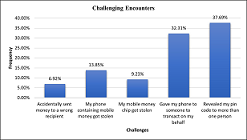References:
[1] Sharma, A. K., & Talwar, B. (2005).
Corporate social responsibility: Modern vis‐à‐vis Vedic approach. Measuring Business
Excellence, 9(1), 35–45. https://doi.org/10.1108/13683040510588828.
[2]
McAdam, R., & Leonard, D. (2003). Corporate Social Responsibility
in a Total Quality Management Context: Opportunities for Sustainable Growth. Corporate Governance, 3, 36-45. http://dx.doi.org/10.1108/14720700310497104.
[3]
Bowen, H. R. (1953). Social responsibilities of the businessman. New
York: Harper& Row.
[4]
Davis, K. (1960). Can business afford to ignore
social responsibilities? California Management
Review, Spring, Vol. 2, pp.70–76.
[5]
Davis, K. (1967). Understanding The Social Responsibility Puzzle,
Business Horizons 10(4), 45–51.
[6]
Alniacik,
U., Alniacik, E., & Genc, N. (2011). How corporate social responsibility information
influences stakeholders’ intentions. Corporate Social Responsibility and Environmental
Management, 18(4), 234–245. https://doi.org/10.1002/csr.245.
[7]
Dusuki,
A. W., & Abdullah, N. I. (2007). Maqasid al-Shari`ah, Maslahah, and Corporate
Social Responsibility. American Journal of Islamic Social Sciences, 24(1),
25–45. https://doi.org/10.35632/ajiss.v24i1.415.
[8]
Cone
Communications/Ebiquity. (2015). Global CSR Study. www.conecomm.com/global-CSR-study.
[9]
Cone.
(2007). Cause Evolution Survey [Survey]. http://www.coneinc.com/stuff/contentmgr/fi
les/0/A8880735bb2e2e894a949830055ad559/ Files/2007_Cause_Evolution_Survey.Pdf.
[10]
Bhattacharya,
C. B., Sen, S., & Korschun, D. (2008). Using Corporate Social Responsibility
to Win the War for Talent. MIT Sloan Management Review, 49(2), 37–44.
[11]
Brønn,
P. S., & Vrioni, A. B. (2001). Corporate social responsibility and cause-related
marketing: An overview. International Journal of Advertising, 20(2),
207–222. https://doi.org/10.1080/02650487.2001.11104887.
[12]
Mohr,
L. A., & Webb, D. J. (2005). The effects of corporate social responsibility
and price on consumer responses. Journal of Consumer Affairs, 39(1),
121–147. https://doi.org/10.1111/j.1745-6606.2005.00006.x.
[13]
Balabanis,
G., Phillips, H. C., & Lyall, J. (1998). Corporate social responsibility and
economic performance in the top British companies: Are they linked? European
Business Review, 98(1), 25–44. https://doi.org/10.1108/09555349810195529.
[14]
Becker-Olsen,
K. L., & Hill, R. (2005). The Impact of Perceived Corporate Social Responsibility
on Consumer Behavior. UC Berkeley: Center for Responsible Business. https://escholarship.org/uc/item/98f4n4fr.
[15] Jackson,
E. A., & Jackson, H. F. (2018). The
role of corporate social responsibility in improving firms’ business in the direction
of sustainable development, accountability, and transparency. African Journal of Economic and Sustainable Development,
Vol. 6, No. 2-3.
[16] Mohr, L. A., Webb, D. J., & Harris. K. E.
(2001). Do Consumers Expect Companies to be Socially Responsible? The Impact of
Corporate Social Responsibility on Buying Behavior. Summer, Volume 35, Number 1.
[17]
Porter,
M. E., & Kramer, M. R. (2006). Strategy and society: The link between competitive
advantage and corporate social responsibility. Harvard Business Review, 84(12),
78–92, 163.
[18] Vogel, D. (2006). The Market for Virtue: The Potential
and Limits of Corporate Social Responsibility. Ethics and economics, Washington, D.C.: Brookings Institution Press.
[19]
Margolis,
J. D., & Walsh, J. P. (2001). People and Profits? The Search for a Link between
a Company’s Social and Financial Performance. Erlbaum.
[20]
Dartey-Baah,
K., & Amponsah-Tawiah, K. (2011). Exploring the limits of Western Corporate
Social Responsibility Theories in Africa. International Journal of Business and
Social Science, 2(18), 13.
[21]
Atuguba, R., & Dowuona-Hammond, C. (2006,
June). Corporate social responsibility in Ghana report. Prepared for the Freidrich
Ebert Foundation (FES)—Ghana. Available: www.revitali zation.org/csrm/Documents/CSR
final report-3-8-06.doc (accessed 20 Sept 2015).
[22]
Young Mudavanhu. (2017). Quality of literature
review and discussion of findings in selected papers on integration of ICT in teaching,
the role of mentors, and teaching science through science, technology, engineering,
and mathematics (STEM). Educational Research
and Reviews, Academic Journals, Vol. 12(4), pp. 189-201.
[23]
Perez-Sindin, J. S. (2017). The SAGE Encyclopedia
of Communication Research Methods: Secondary Data, SAGE Publications.
[24]
Anwar, M. (2019). Business Model Innovation
and SMEs Performance — Does Competitive Advantage Mediate? International Journal of Innovation Management, Vol. 22, No. 7 DOI:
10.1142/S1363919618500573
[25]
Dahlsrud,
A. (2008). How corporate social responsibility is defined: An analysis of 37 definitions.
Corporate Social Responsibility and Environmental Management, 15(1),
1–13. https://doi.org/10.1002/csr.132.
[26]
Moir,
L. (2001). What do we mean by corporate social responsibility? Corporate Governance:
The International Journal of Business in Society, 1(2), 16–22. https://doi.org/10.1108/EUM0000000005486.
[27]
Frederick,
W. C. (2016). From CSR1 to CSR2: The Maturing of Business-and-Society Thought. Business
& Society, 33(2), 150–164. https://doi.org/10.1177/00075039403300202.
[28]
Cochran,
P. L. (2007). The evolution of corporate social responsibility. Business Horizons,
50(6), 449–454. https://doi.org/10.1016/j.bushor.2007.06.004.
[29]
Brammer,
S., Jackson, G., & Matten, D. (2012). Corporate Social Responsibility and institutional
theory: new perspectives on private governance. Socio-Economic Review, 10(1),
3–28. https://doi.org/10.1093/ser/mwr030.
[30]
Michael,
B. (2003). Corporate social responsibility in international development: An overview
and critique. Corporate Social Responsibility and Environmental Management, 10(3),
115–128. https://doi.org/10.1002/csr.41.
[31]
Carroll, A. B. (2009). A History of Corporate
Social Responsibility. In A. Crane, D. Matten, A. McWilliams, J. Moon, & D.
S. Siegel (Eds.), The Oxford Handbook of Corporate Social Responsibility
(Vol. 1). Oxford University Press. https://doi.org/10.1093/oxfordhb/9780199211593.003.0002.
[32]
Archie B Carroll. (1991). The Pyramid of Corporate
Social Responsibility: Toward the Moral Management of Organizational Stakeholders.
Business Horizons, 34(4):39-48.
[33]
Garriga,
E., & Melé, D. (2004). Corporate Social Responsibility Theories: Mapping the
Territory. Journal of Business Ethics, 53(1), 51–71. https://doi.org/10.1023/B:BUSI.0000039399.90587.34.
[34]
Hildebrand,
D., Sen, S., & Bhattacharya, C. B. (2011). Corporate social responsibility:
A corporate marketing perspective. European Journal of Marketing, 45(9/10),
1353–1364. https://doi.org/10.1108/03090561111151790.
[35]
Porter,
M. E., & Kramer, M. R. (2006). Strategy and society: The link between competitive
advantage and corporate social responsibility. Harvard Business Review, 84(12),
78–92, 163.
[36]
Kurucz,
E. C., Colbert, B. A., & Wheeler, D. (2009). The Business Case for Corporate
Social Responsibility (A. Crane, D. Matten, A. McWilliams, J. Moon, & D.
S. Siegel, Eds.; Vol. 1). Oxford University Press. https://doi.org/10.1093/oxfordhb/9780199211593.003.0004.
[37]
Brønn,
P. S., & Vrioni, A. B. (2001). Corporate social responsibility and cause-related
marketing: An overview. International Journal of Advertising, 20(2), 207–222. https://doi.org/10.1080/02650487.2001.11104887.
[38]
Webb, D.J.
& Mohr, L.A. (1998). A Typology of Consumer Responses to Cause Related Marketing:
From Skeptics to Socially. Journal of Public
Policy Marketing, 2, 226-238.
[39]
Becker-Olsen,
K. L., & Hill, R. (2005). The Impact of Perceived Corporate Social Responsibility
on Consumer Behaviour. UC Berkeley: Centre for Responsible Business. https://escholarship.org/uc/item/98f4n4fr.
[40]
Lindgreen,
A., & Swaen, V. (2010). Corporate Social Responsibility (CSR). International
Journal of Management Reviews, 12(1), 1–7. https://doi.org/10.1111/j.1468-2370.2009.00277.x.
[41]
Said,
R., Hj Zainuddin, Y., & Haron, H. (2009). The relationship between corporate
social responsibility disclosure and corporate governance characteristics in Malaysian
public listed companies. Social Responsibility Journal, 5(2), 212–226.
https://doi.org/10.1108/17471110910964496.
[42]
Lichtenstein,
D. R., Drumwright, M. E., & Braig, B. M. (2004). The Effect of Corporate Social
Responsibility on Customer Donations to Corporate-Supported Nonprofits. Journal
of Marketing, 68(4), 16–32. https://www.jstor.org/stable/30162013.

 Project Planning, Stakeholder Involvement, Risk Management, and Project Success - A Case of Selected NGOs in South SudanAuthor: Amule Robert EllyDOI: 10.21522/TIJMG.2015.09.01.Art001
Project Planning, Stakeholder Involvement, Risk Management, and Project Success - A Case of Selected NGOs in South SudanAuthor: Amule Robert EllyDOI: 10.21522/TIJMG.2015.09.01.Art001 The Influence of Economic and Technology Factors on Performance Outcomes of Community Pharmacists in Nigeria: A Structural Equation Modeling StudyAuthor: Theophilus Ehidiamen OamenDOI: 10.21522/TIJMG.2015.09.01.Art002
The Influence of Economic and Technology Factors on Performance Outcomes of Community Pharmacists in Nigeria: A Structural Equation Modeling StudyAuthor: Theophilus Ehidiamen OamenDOI: 10.21522/TIJMG.2015.09.01.Art002 CSR Paradigms, Consumer Behaviour, and Business Performance: A Literature-Based AnalysisAuthor: Joyce Koi AkrofiDOI: 10.21522/TIJMG.2015.09.01.Art003
CSR Paradigms, Consumer Behaviour, and Business Performance: A Literature-Based AnalysisAuthor: Joyce Koi AkrofiDOI: 10.21522/TIJMG.2015.09.01.Art003 Investigating Challenges of Mobile Money usage in the Central Business District of the Kumasi Metropolitan Assembly, Adum- GhanaAuthor: James Mado LambongangDOI: 10.21522/TIJMG.2015.09.01.Art004
Investigating Challenges of Mobile Money usage in the Central Business District of the Kumasi Metropolitan Assembly, Adum- GhanaAuthor: James Mado LambongangDOI: 10.21522/TIJMG.2015.09.01.Art004 Information, Communication and Technology (ICT) Governance in Public Organizations: A Study of the Nigerian Communications Commission (NCC)Author: Priscilla KusenaDOI: 10.21522/TIJMG.2015.09.01.Art005
Information, Communication and Technology (ICT) Governance in Public Organizations: A Study of the Nigerian Communications Commission (NCC)Author: Priscilla KusenaDOI: 10.21522/TIJMG.2015.09.01.Art005 Is Organizational Evaluation Competency Framework Contextually Relevant for Local NGO Strategy Measurement? Evidence from UgandaAuthor: Lawrence Rafaih OkelloDOI: 10.21522/TIJMG.2015.09.01.Art006
Is Organizational Evaluation Competency Framework Contextually Relevant for Local NGO Strategy Measurement? Evidence from UgandaAuthor: Lawrence Rafaih OkelloDOI: 10.21522/TIJMG.2015.09.01.Art006 Financial Management of Village Savings and Loans Associations in West Nile, UgandaAuthor: Yanga Elias LaguDOI: 10.21522/TIJMG.2015.09.01.Art007
Financial Management of Village Savings and Loans Associations in West Nile, UgandaAuthor: Yanga Elias LaguDOI: 10.21522/TIJMG.2015.09.01.Art007 The Effect of Human Resource Management on Performance of Employees with Mediating Effect of Work-Life Balance in NigeriaAuthor: Priscilla KusenaDOI: 10.21522/TIJMG.2015.09.01.Art008
The Effect of Human Resource Management on Performance of Employees with Mediating Effect of Work-Life Balance in NigeriaAuthor: Priscilla KusenaDOI: 10.21522/TIJMG.2015.09.01.Art008 Evaluation Steering and Strategy Performance of Local NGOs in UgandaAuthor: Lawrence Rafaih OkelloDOI: 10.21522/TIJMG.2015.09.01.Art009
Evaluation Steering and Strategy Performance of Local NGOs in UgandaAuthor: Lawrence Rafaih OkelloDOI: 10.21522/TIJMG.2015.09.01.Art009
